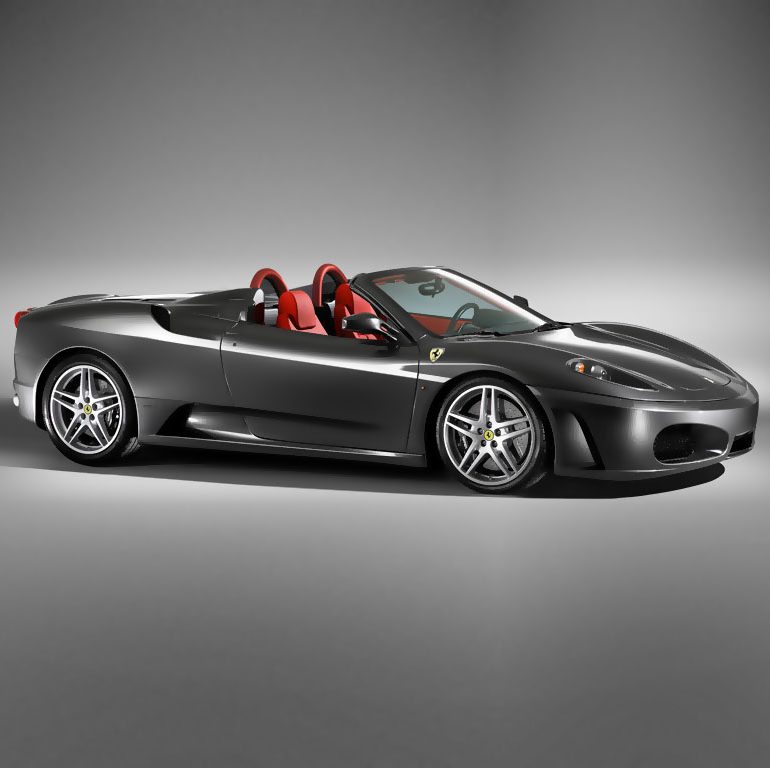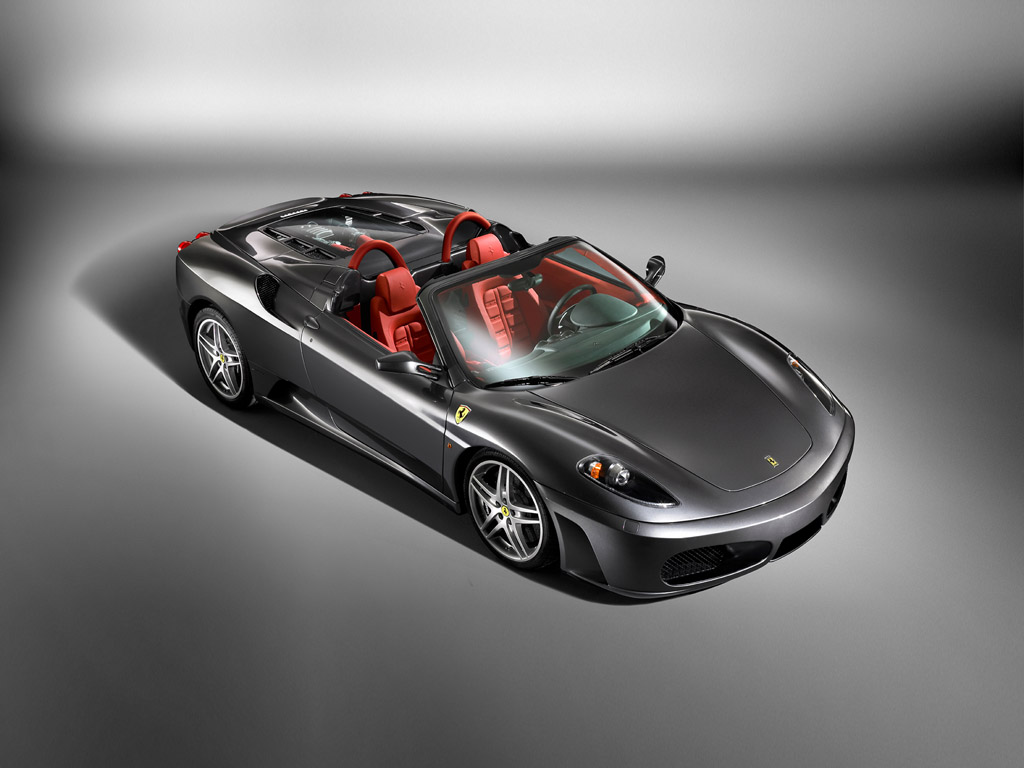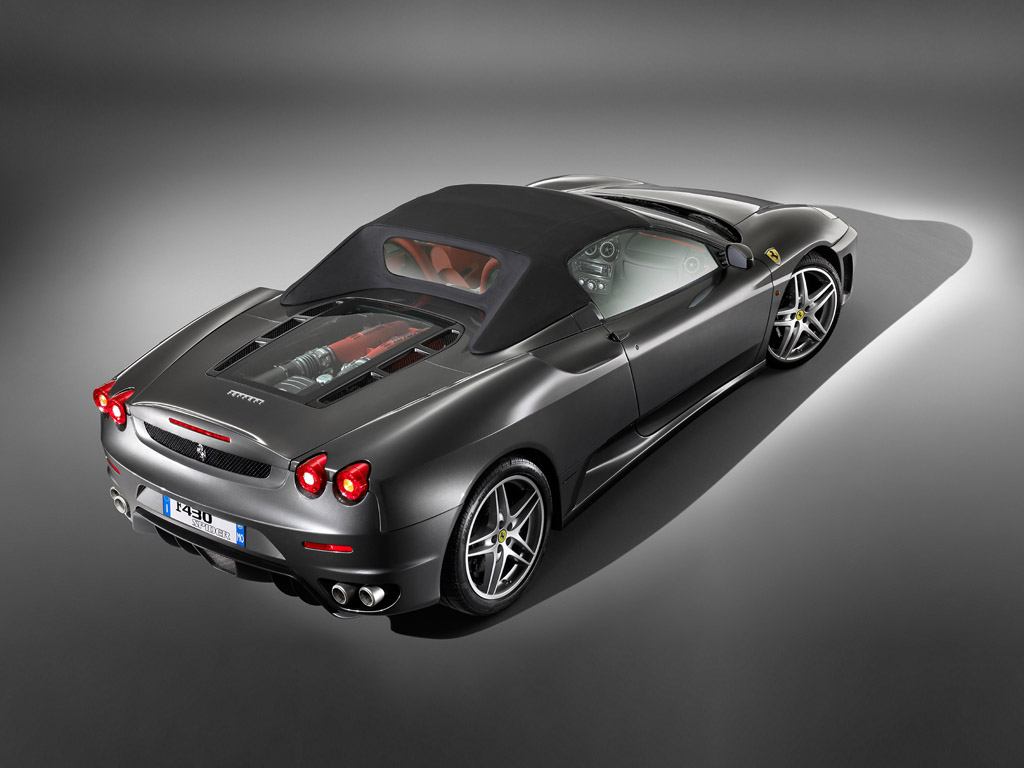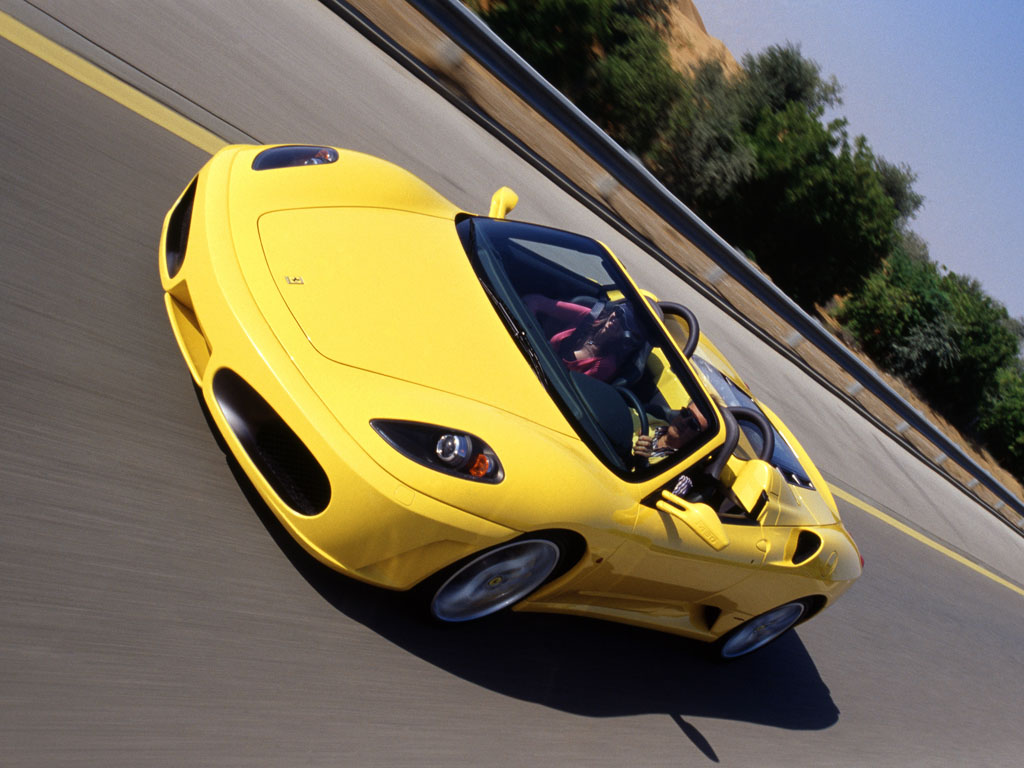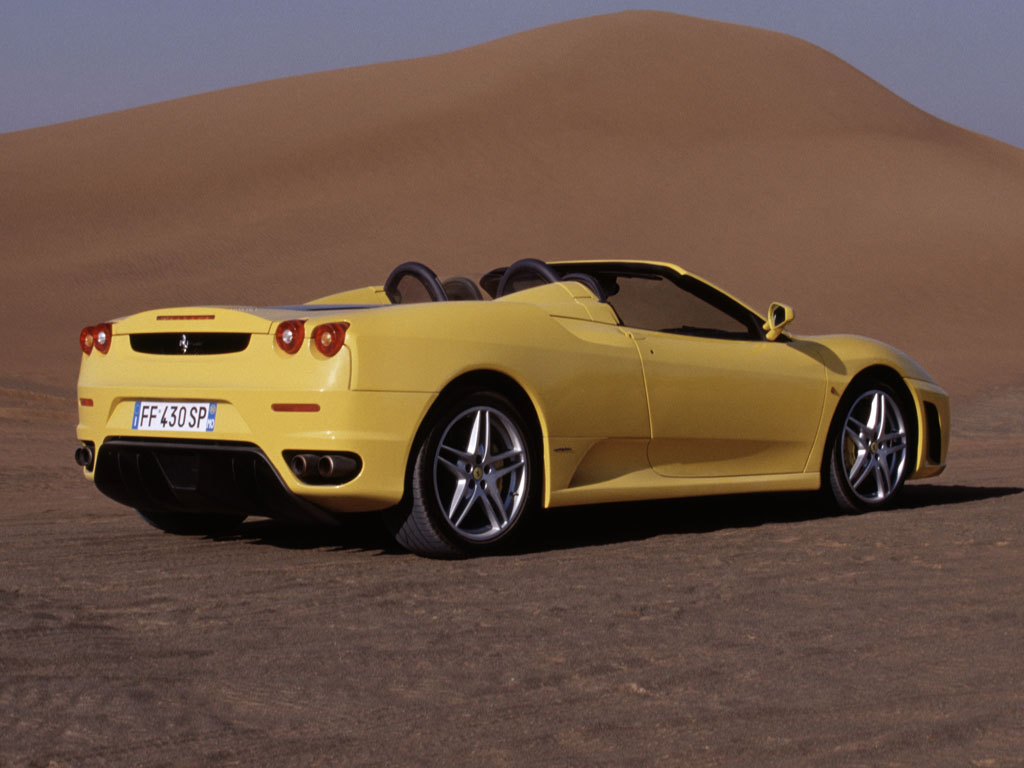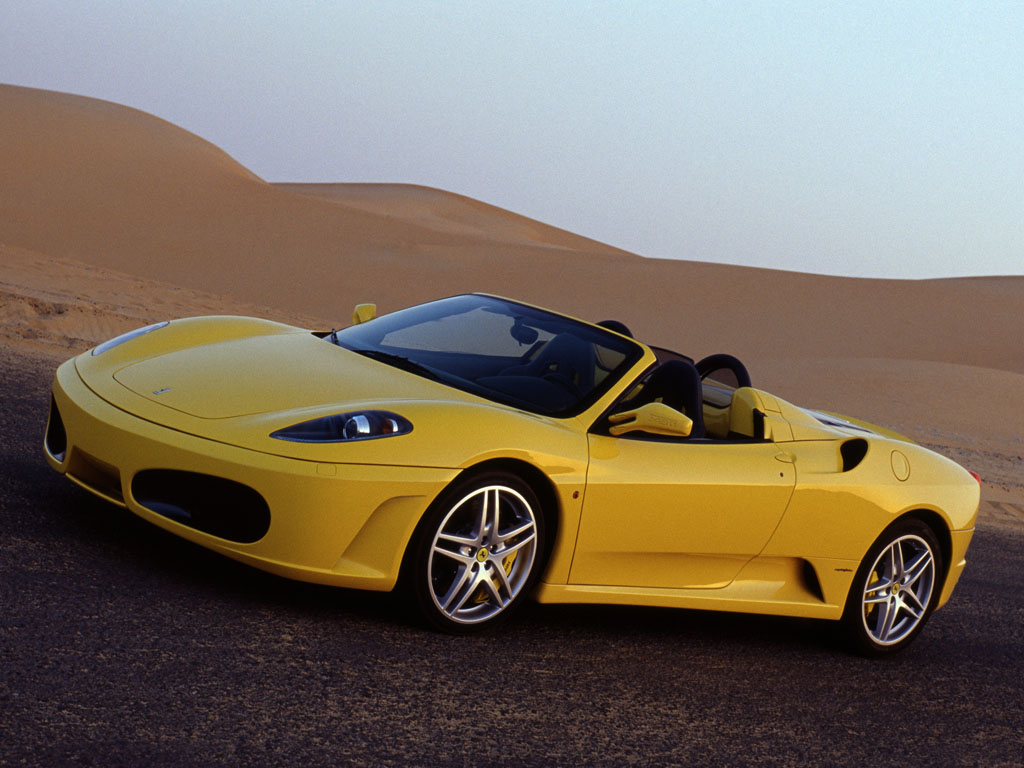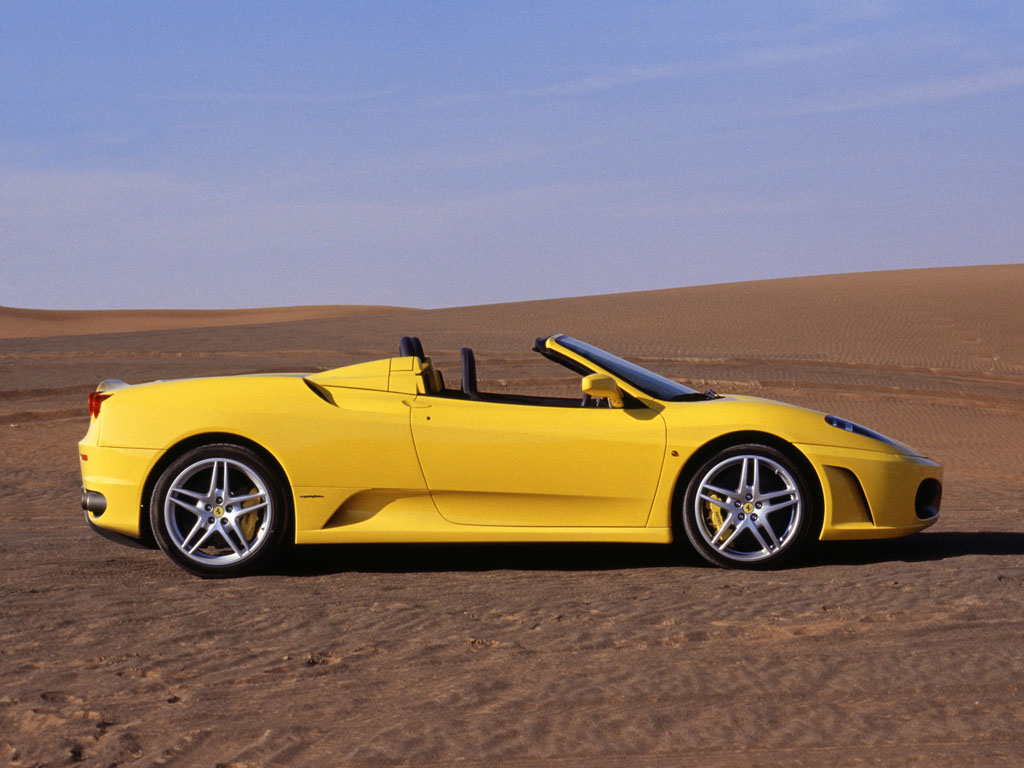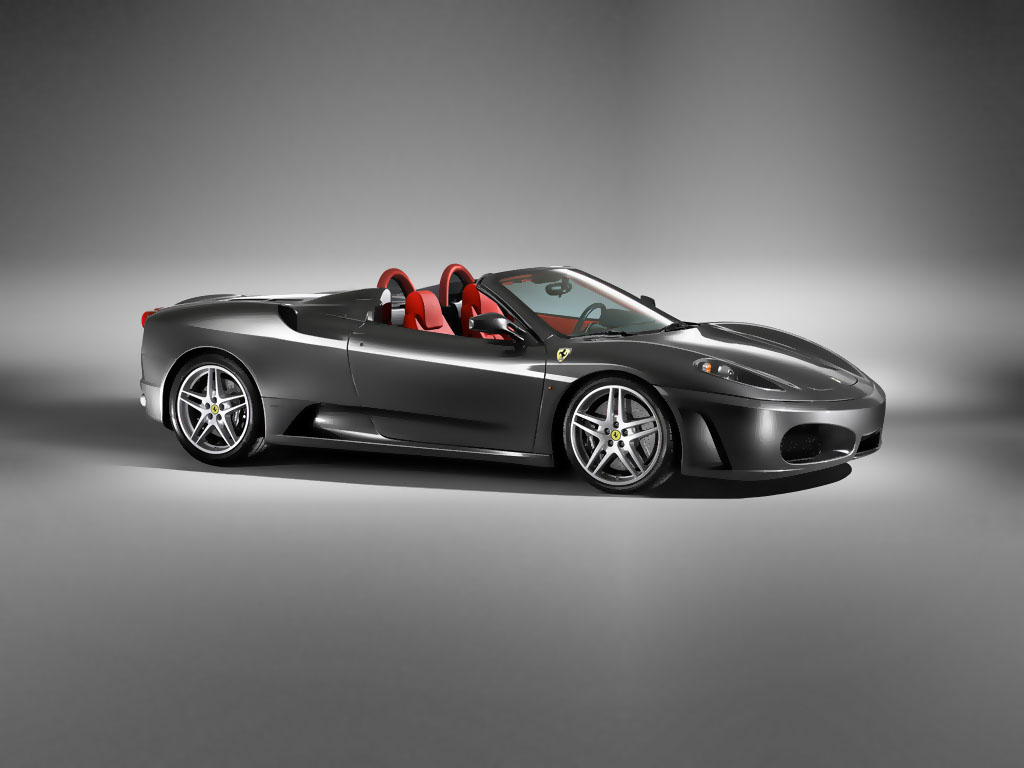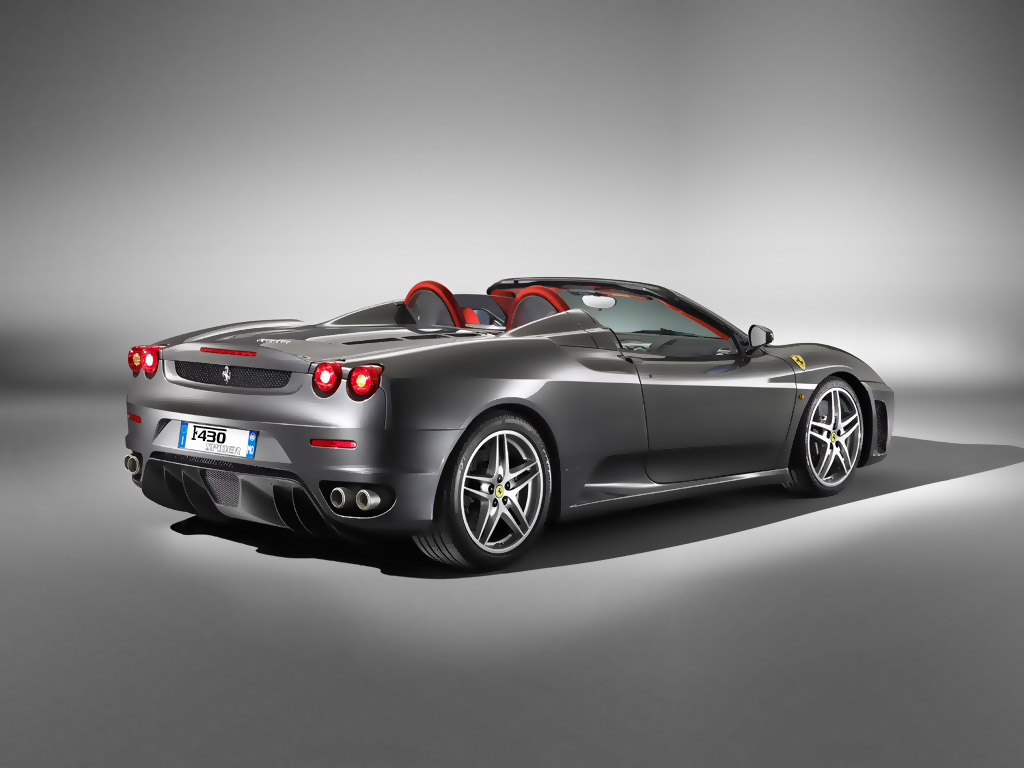Ferrari F430 Spider
Ferrari’s range of V8-engined sports cars will be joined by the new F430 Spider when it is unveiled at the Geneva Show (3-13 March 2005).
Ferrari’s new drop-top includes a number of important technical features which give hints of the car’s F1 pedigree, starting with the innovative electronic differential – first developed by the racing division for the Scuderia’s all-conquering F1 cars – which improves traction and roadholding under all conditions. The Spider also features the steering wheel-mounted commutator switch, known to the Scuderia’s drivers as the ‘manettino’, which allows the car’s set-up to be adjusted easily and quickly.
Formula 1 is thus again the inspiration for the development of the company’s road cars. Designed by Pininfarina, the F430 Spider’s sinuous lines, in fact, were fine-tuned using state-of-the-art computer aerodynamics simulation programmes usually employed exclusively by the F1 team.
The F430 Spider’s shape is the result of lengthy testing and features a pronounced nolder which is integrated into the end of the engine cover, new bigger rear air intakes that emphasise the car’s muscular stance, and a new rear valance that incorporates a diffuser of competition derivation. The engine itself is attractively set below a glass cover.
Just like the berlinetta, the new Spider incorporates two elliptical air intakes that feed the front radiators. The shape of the intakes is inspired by Ferrari’s racing cars from the 1961 season, especially the 156 F1 which Phil Hill drove to that year’s F1 Championship title. The spoiler that joins the two intakes at their bottom edge is highly effective in directing the central air flow towards the flat underbody.
The F430 Spider boasts a compact, fully automatic electric hood that allows the engine to be seen in all its glory at all times and which, once lowered, takes up relatively little space, despite the uncompromising central-rear engine layout.
The F430 Spider is powered by Ferrari’s new 490 hp, 4,308cc 90° V8 which is capable of pushing the car to a top speed of over 310 km/h (over 193 mph) and covering the 0-100 km/h (0-62 mph) sprint in just 4.1 seconds. This lightweight and highly compact power unit produces a specific output of 114 hp per litre with a weight-to-power ratio of 2.9 kg (6.4 lbs) per horsepower (dry weight).
Specs & Performance
| submitted by | Richard Owen |
| body stylist | Frank Stephenson |
| coachbuilder | Pininfarina |
| price $ | $195 000 USD |
| engine | Aluminum Alloy, 90 Degree V8 w/Dry Sump Lubrication |
| position | Mid Longitudinal |
| aspiration | Natural |
| valvetrain | DOHC, 4 Valves per Cylinder w/Variable Timing, Variable Intake Tract |
| fuel feed | Bosch Multi-Point Electronic Sequential Injection |
| displacement | 4308 cc / 262.9 in³ |
| bore | 92 mm / 3.62 in |
| stroke | 81 mm / 3.19 in |
| compression | 11.3:1 |
| power | 360.4 kw / 483.3 bhp @ 8500 rpm |
| specific output | 112.19 bhp per litre |
| bhp/weight | 317.96 bhp per tonne |
| torque | 465 nm / 343.0 ft lbs @ 5250 rpm |
| redline | 8500 |
| body / frame | Aluminum Monocoque |
| driven wheels | RWD w/E-Diff, CST |
| front brakes | Carbon-Ceramic Discs w/6-Piston Calipers, ABS, EBD |
| rear brakes | Carbon-Ceramic Discs w/4-Piston Calipers, ABS, EBD |
| front wheels | F 48.3 x 19.0 cm / 19 x 7.5 in |
| rear wheels | R 48.3 x 25.4 cm / 19 x 10 in |
| steering | Rack & Pinion |
| f suspension | Double Wishbones w/Coil Springs, Electric Adj Tube Shocks, Anti-Roll Bar |
| r suspension | Double Wishbones w/Coil Springs, Electric Adj Tube Shocks, Anti-Roll Bar |
| curb weight | 1520 kg / 3351 lbs |
| wheelbase | 2600 mm / 102.4 in |
| front track | 1669 mm / 65.7 in |
| rear track | 1616 mm / 63.6 in |
| length | 4512 mm / 177.6 in |
| width | 1923 mm / 75.7 in |
| height | 1234 mm / 48.6 in |
| transmission | Manual or F1 Paddle Shift |
| gear ratios | 3.29:1, 2.16:1, 1.61:1, 1.27:1, 1.03:1, 0.82:1 |
| final drive | 4.30:1 |
| top speed | ~310.6 kph / 193 mph |
| 0 – 60 mph | ~4.1 seconds |
| 0 – 100 mph | ~9.3 seconds |
| 0 – 1/4 mile | ~12.5 seconds |


